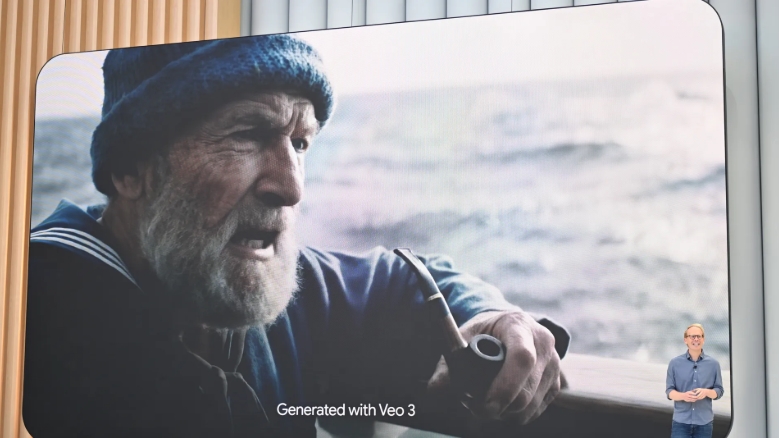Traditional film industry facing AI replacement with Google’s new AI tool

Videos created with Veo 3 amazed users on Twitter with their lifelike quality while simultaneously sparking unease as the line between real and fake content becomes increasingly blurred.
Google’s newest AI video generator, Veo 3, is revolutionising digital content creation by producing clips so realistic that most online viewers cannot tell them apart from those made by human filmmakers and actors.
Videos created with Veo 3 amazed users on X with their lifelike quality while simultaneously sparking unease as the line between real and fake content becomes increasingly blurred.
More To Read
- Google will no longer warn users about Dark Web leaks starting 2026
- Google unveils headphone-ready live translation feature on Android
- G42 gets US approval to import advanced AI chips, launching UAE’s AI mega-hub
- Developers react to Google’s AI privacy push: ‘It was inevitable’
- Google unveils 'Insights' for messages app, offering smart summaries of key info
- Google Maps enters AI era with realtime lane guidance feature
Unlike OpenAI’s video generator Sora, released last December, Veo 3 incorporates dialogue, soundtracks, and sound effects, making its outputs far more sophisticated, meaning anyone can now create a fully produced film from the comfort of their own home.
The technology is great at understanding detailed instructions and turning them into realistic videos that look natural, with correct lip movements and smooth flow.
The AI even generates people with lifelike details, such as five fingers on each hand, with few visible signs of artificiality.
While Hollywood has long adapted to special effects and editing innovations, AI-generated films like those created by Veo 3 introduce a new challenge to traditional creators.
In promotional content for Flow, Google’s new video tool integrating Veo 3, filmmakers describe the AI as offering a sense of creative freedom coupled with unsettling autonomy.
“It feels like it’s almost building upon itself.” Filmmaker Dave Clark said.
Veo 3 was unveiled at Google I/O and initially made available to Google AI Ultra subscribers in the United States at $249 (Sh. 33,000) per month.
Since then, Google has expanded access to over 70 countries, including Kenya, where users can now access Veo 3 through Google’s AI Pro and AI Ultra subscription plans.
This means that people in Kenya can also create sophisticated AI-generated videos from home, though subscription costs and features may vary.
Google states that Veo 3’s development was informed by collaboration with creators and filmmakers, some of whom have embraced the new possibilities AI offers.
As hyper-realistic AI video creation becomes more accessible, the industry faces unresolved questions about authorship, consent, intellectual property rights, and the future of filmmaking.
The implications of tools like Veo 3 will likely shape how we create and consume video content in the years to come.
Top Stories Today












































